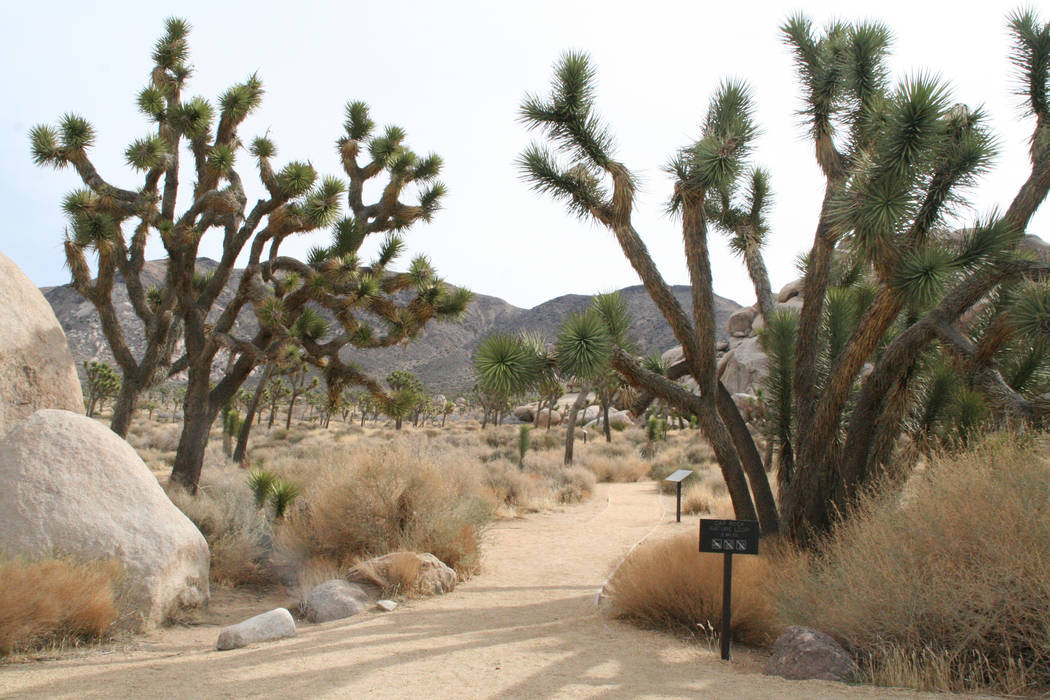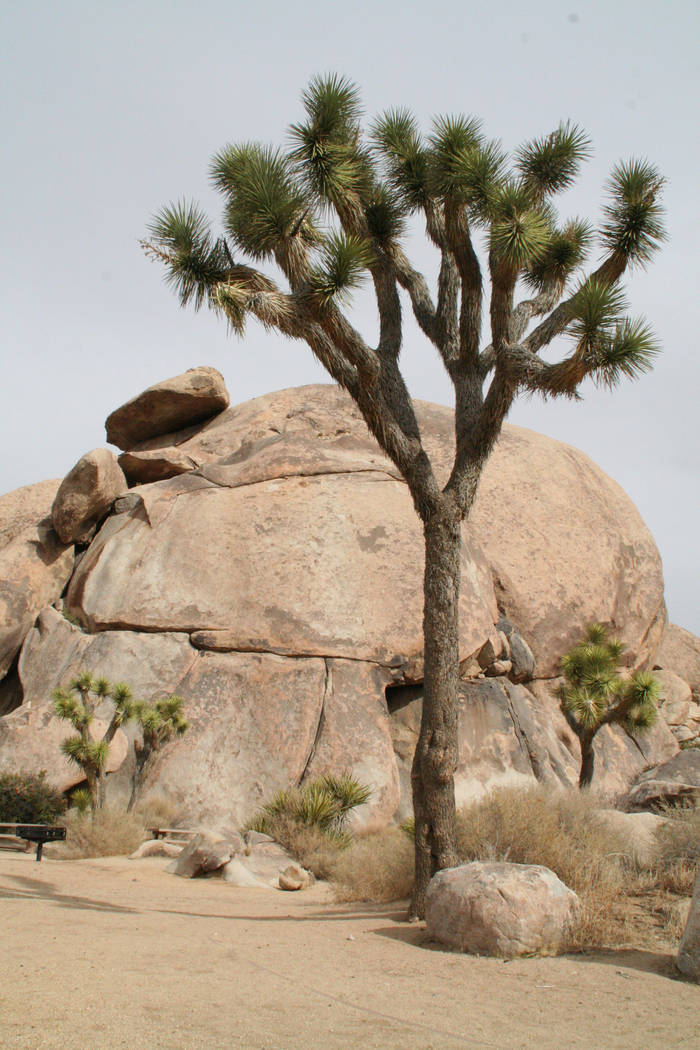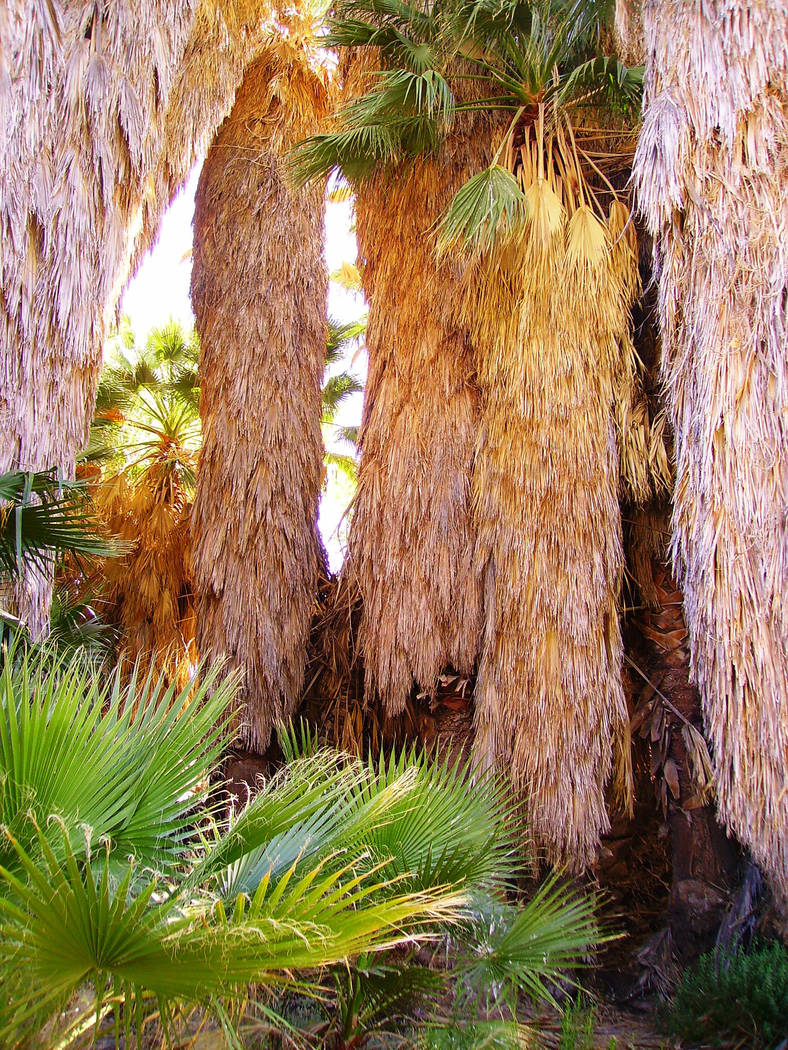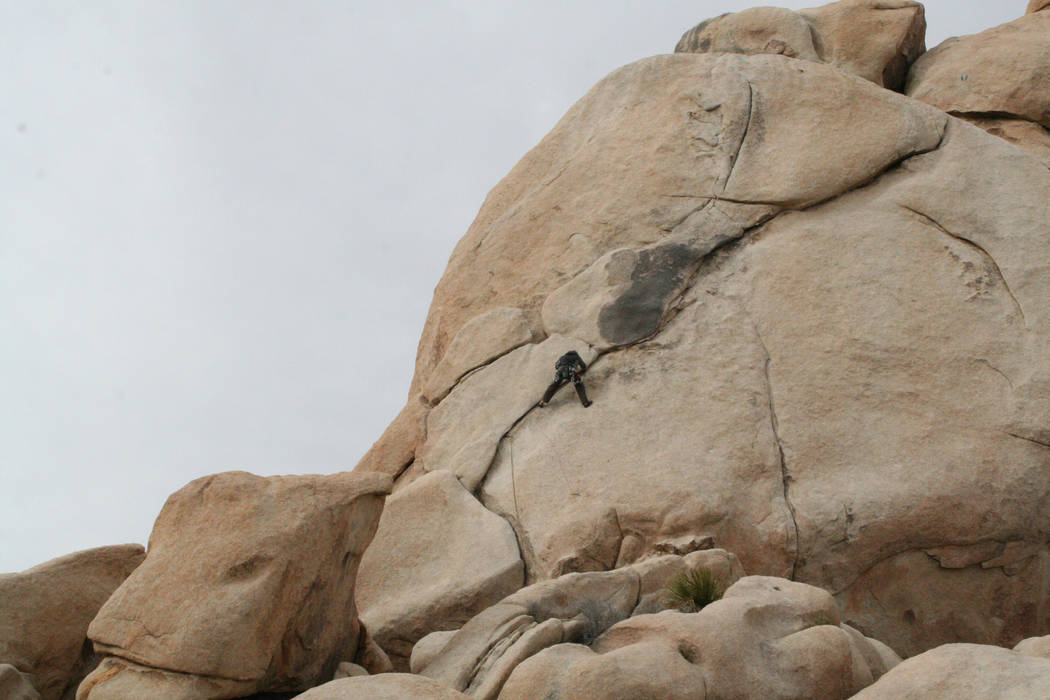Joshua Tree National Park teeming with trails, rock climbing routes
Joshua Tree National Park, of course, is flush with its namesake plant species. It is also home to thousands of rock climbing routes, nearly 200 miles of hiking trails and five desert palm oases.
The park just outside of Twentynine Palms, California, encompasses almost 800,000 acres, with elevations ranging from 536 feet to 5,814 feet.
The western area of the park is part of the Mojave Desert, and the Joshua tree is the dominant plant there. But the eastern portion lies in the Sonoran Desert, with a corresponding difference in vegetation: There you will mostly find creosote, paloverde, ocotillo and cholla cactus.
Perhaps the most interesting places in the park are the native palm oases. In all of North America there are only 158 fan palm oases, and five of them are here.
These oases are home to Washingtonia filifera, the only palm native to western North America. They can grow only where there is a constant supply of water, such as here, where underground water is available from earthquake faults and fractures. These palms typically live 80 to 90 years, and some grow to 75 feet tall.
For people setting out from Southern Nevada, the closest one to visit is the Oasis of Mara. Starting behind the Oasis Visitor Center, there is a paved half-mile loop trail around the fan palms.
Also on this near side of the park is 49 Palm Oasis, about a six-mile drive from the visitor center. To see that one, you’ll need to hike about three miles round-trip; this typically takes a couple of hours.
The other three oases, all sharing the same trailhead, lie in the southern region of the park, about an hour’s drive south from the Oasis Visitor Center and about one mile from the Cottonwood Visitor Center.
The first one is the Cottonwood Spring Oasis, where visitors have to hike only five minutes from the parking area.
The second one is the Lost Palms Oasis, where the trail takes you three and a half miles farther and typically takes about five hours round-trip.
The farthest one is the Munsen Canyon Oasis, which is a few miles past Lost Palms Oasis. I would not recommend going there, as it is an extremely strenuous trek requiring a lot of route finding and rock scrambling.
If you go
Directions: From Las Vegas take U.S. Highway 93/95 south for about 20 miles. Go right onto U.S. 95 south toward Searchlight/Needles. Drive about 79 miles and turn west onto Interstate 40. Drive about 17 miles to the Essex exit, where you will take Route 66 west (National Trails Highway). Drive 46.6 miles and go left onto Amboy Road. Drive 46 more miles, then turn left onto Adobe Road for 2 miles to California Route 62, Twentynine Palms Highway. Turn left and drive a half mile to the Oasis Visitor Center on your right.
What to pack: Water, food, hiking gear, and warm clothes for the chilly evenings and mornings
Length of stay: One night or longer
Camping/lodging: There are nine developed campgrounds in the park. Some take reservations and others are on a first-come, first-served basis. Book a site at recreation.gov or by calling 877-444-6777. Area towns such as Twentynine Palms and Joshua Tree also offer numerous lodging options. visit29.org










